DCC Importer Overview
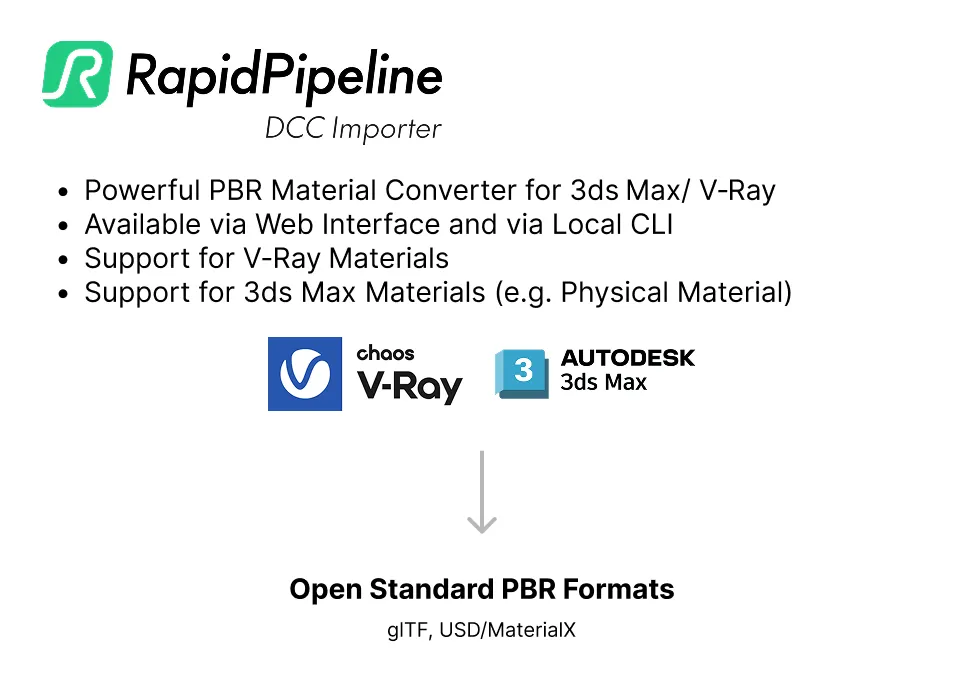
What is the DCC Importer?
The RapidPipeline DCC Importer is a universal material preparation and distillation pipeline.
It converts complex material node graphs into PBR-standard materials. This allows better interoperability between editing applications, and the outputs are ready to be compressed for real-time AR/VR and Web3d uses.
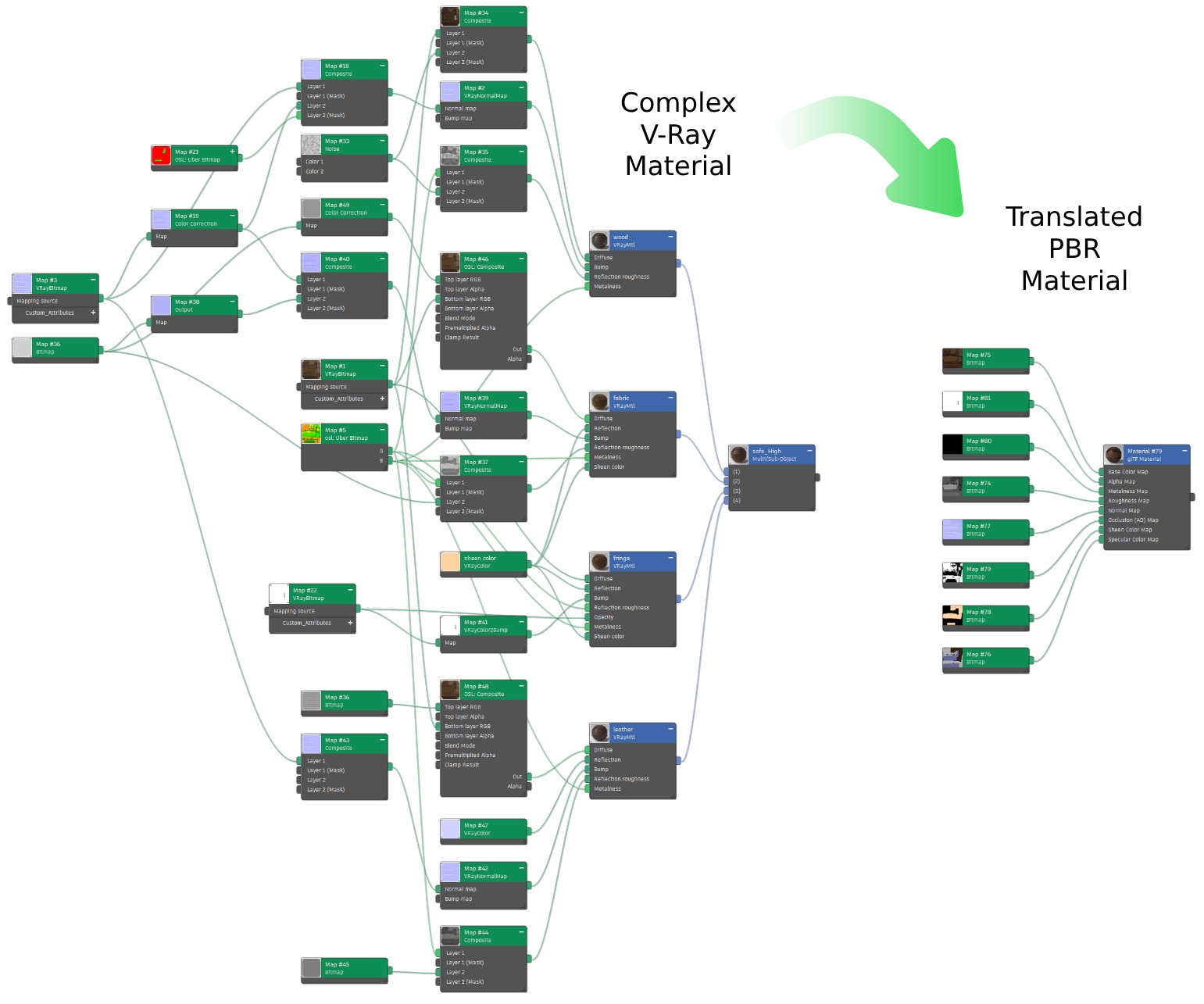
The DCC Importer is available via multiple interfaces:
Open Standards
RapidPipeline DCC Importer generates results based on modern open standards, bridging the gap between different software ecosystems:
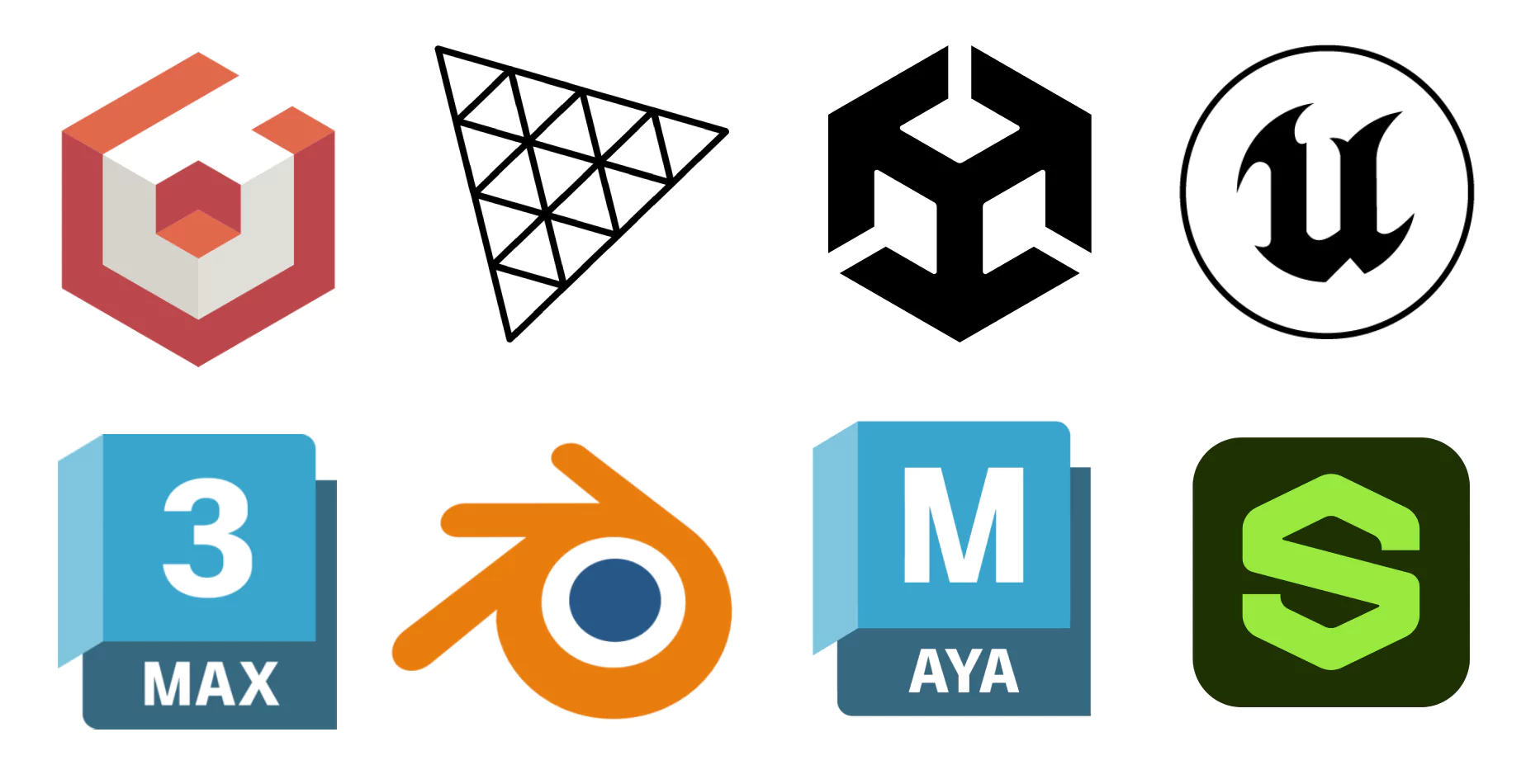
Your 3D model and materials become universally compatible with:
- Web-based 3D viewers like Babylon.js and Three.js
- Game engines like Unity and Unreal Engine
- Digital content creation tools like 3ds Max, Blender, Maya, and Substance
Software Support

RapidPipeline DCC Importer currently supports 3ds Max and V-Ray; support for other DCCs and material systems are planned.
Read more in the System Requirements section.
Artist Intention
The conversion system always attempts to preserve the artist's original intent, converting material values directly wherever possible.
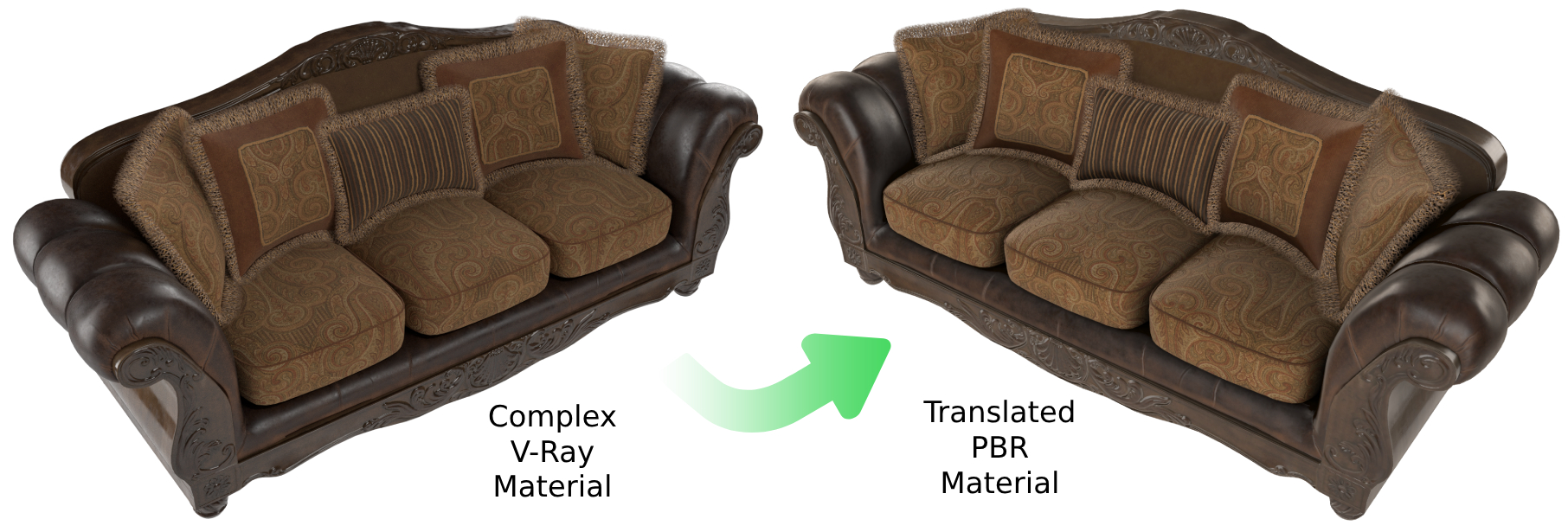
A material classification system allows the conversion to run quickly, only incurring slower baking operations when they are strictly necessary. When an asset contains more complex blending operators, the system renders the material into its component passes, combining these together to produce PBR-compliant textures and materials.
Read more on our 3ds Max Asset Guidelines, to find out how to obtain the best possible results out of the DCC Importer.
Single Asset or Batch Mode
RapidPipeline DCC Importer can be accessed from our RapidPipeline Web Platform in single-asset mode by uploading individual ZIP files, or it can be run on-premise on large batches of assets via the RapidPipeline DCC Importer CLI (command line interface).
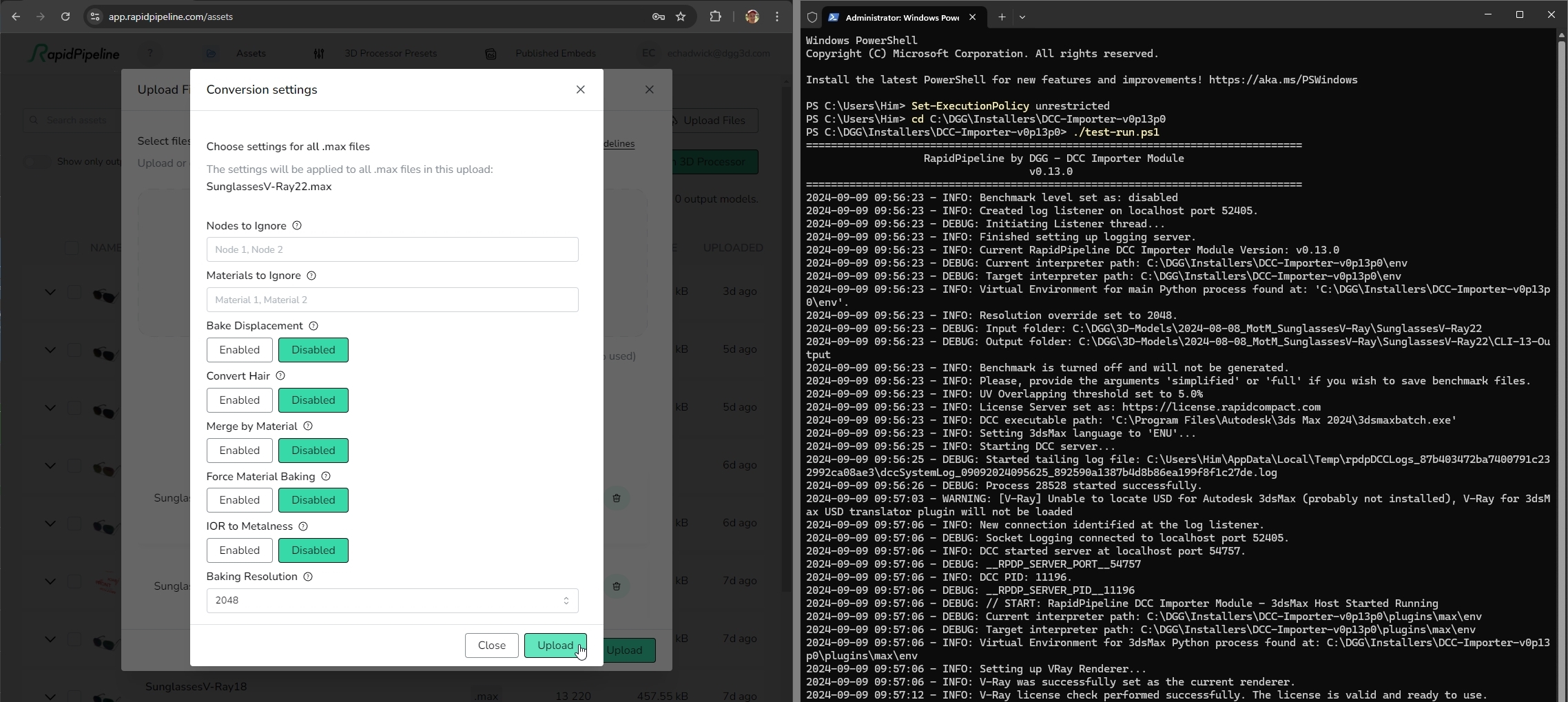
These tools have been battle-tested on hundreds of thousands of assets by leading enterprise businesses.
For the full documentation on how to prepare input files please see RapidPipeline DCC Importer Inputs.
Output
Once the scene is converted, RapidPipeline DCC Importer creates several outputs, such as glTF, GLB, USDz and a USD with MaterialX shaders (using baked textures).
For the full documentation on output files please refer to RapidPipeline DCC Importer Outputs.